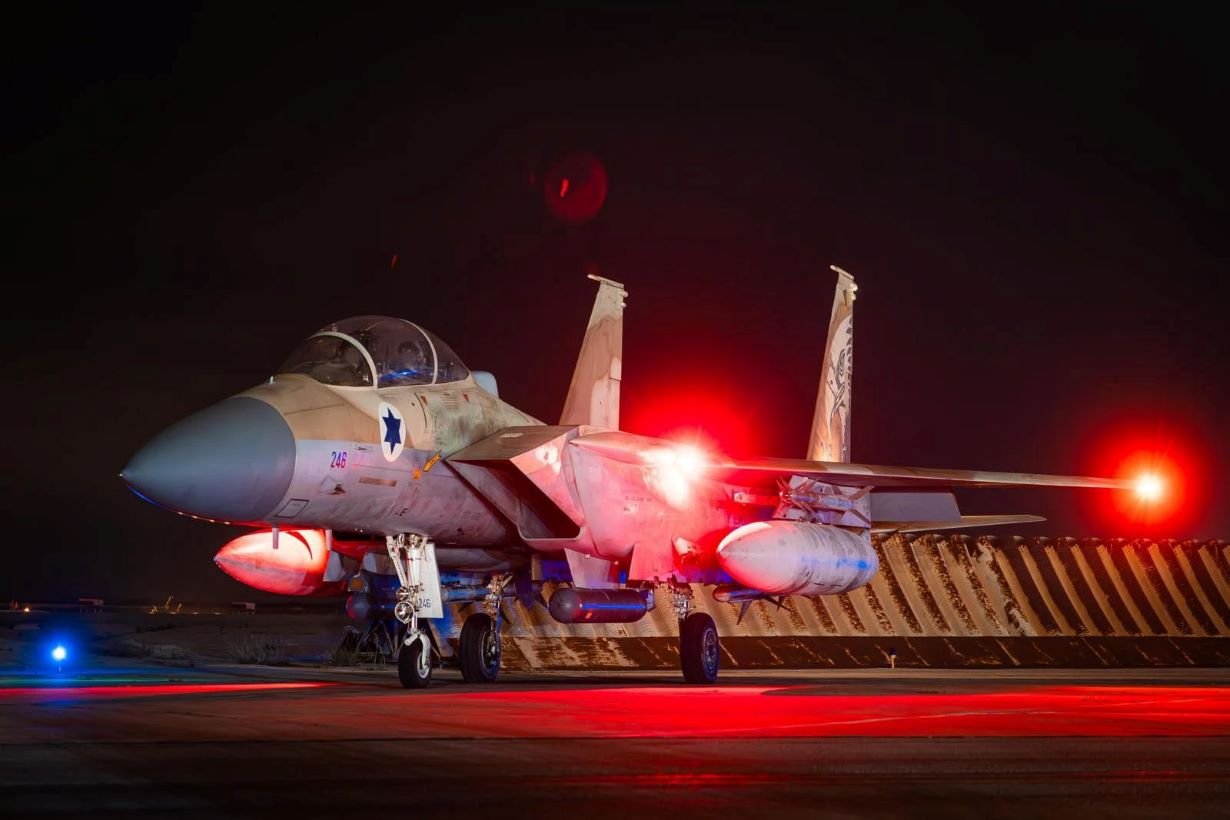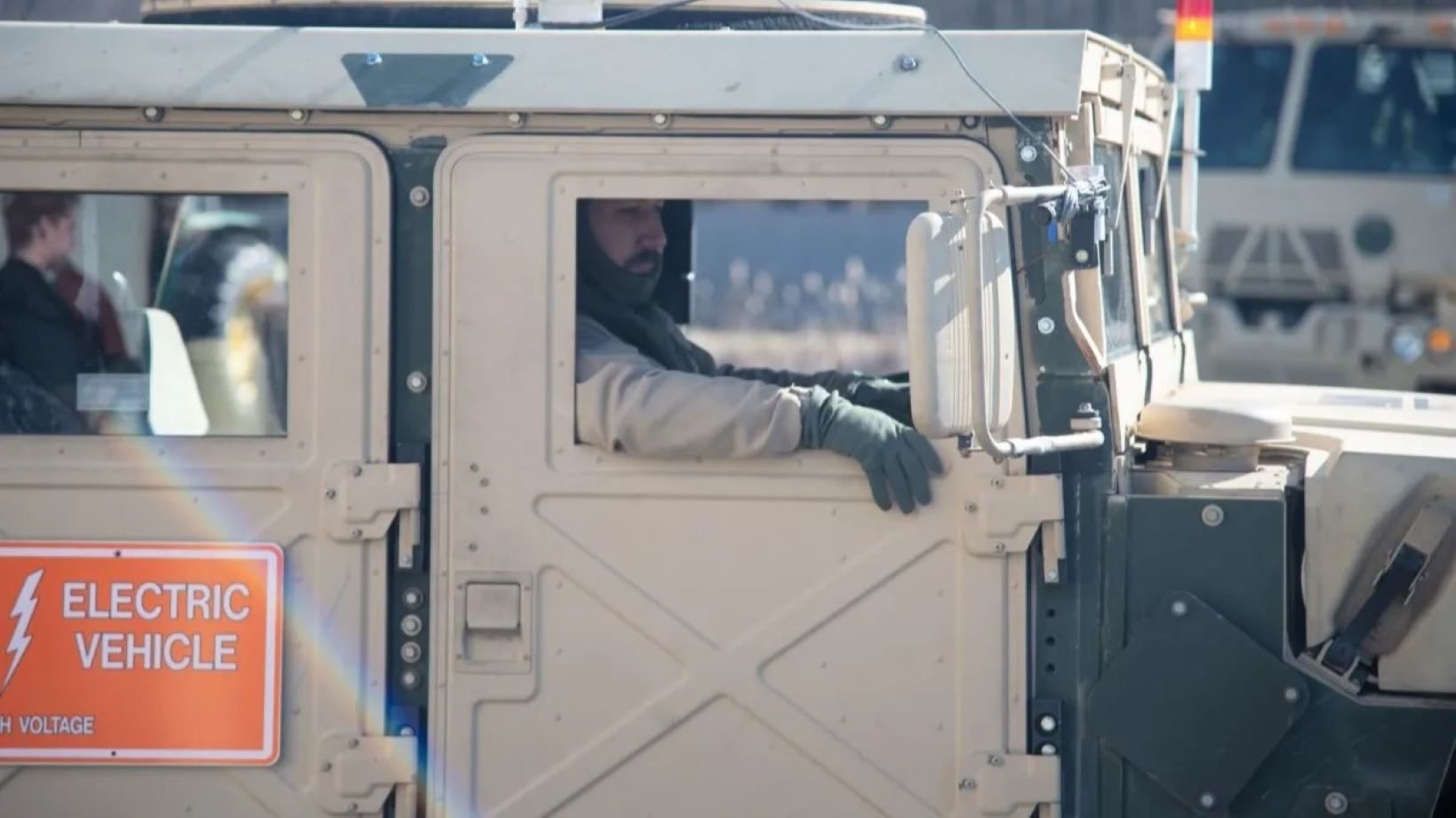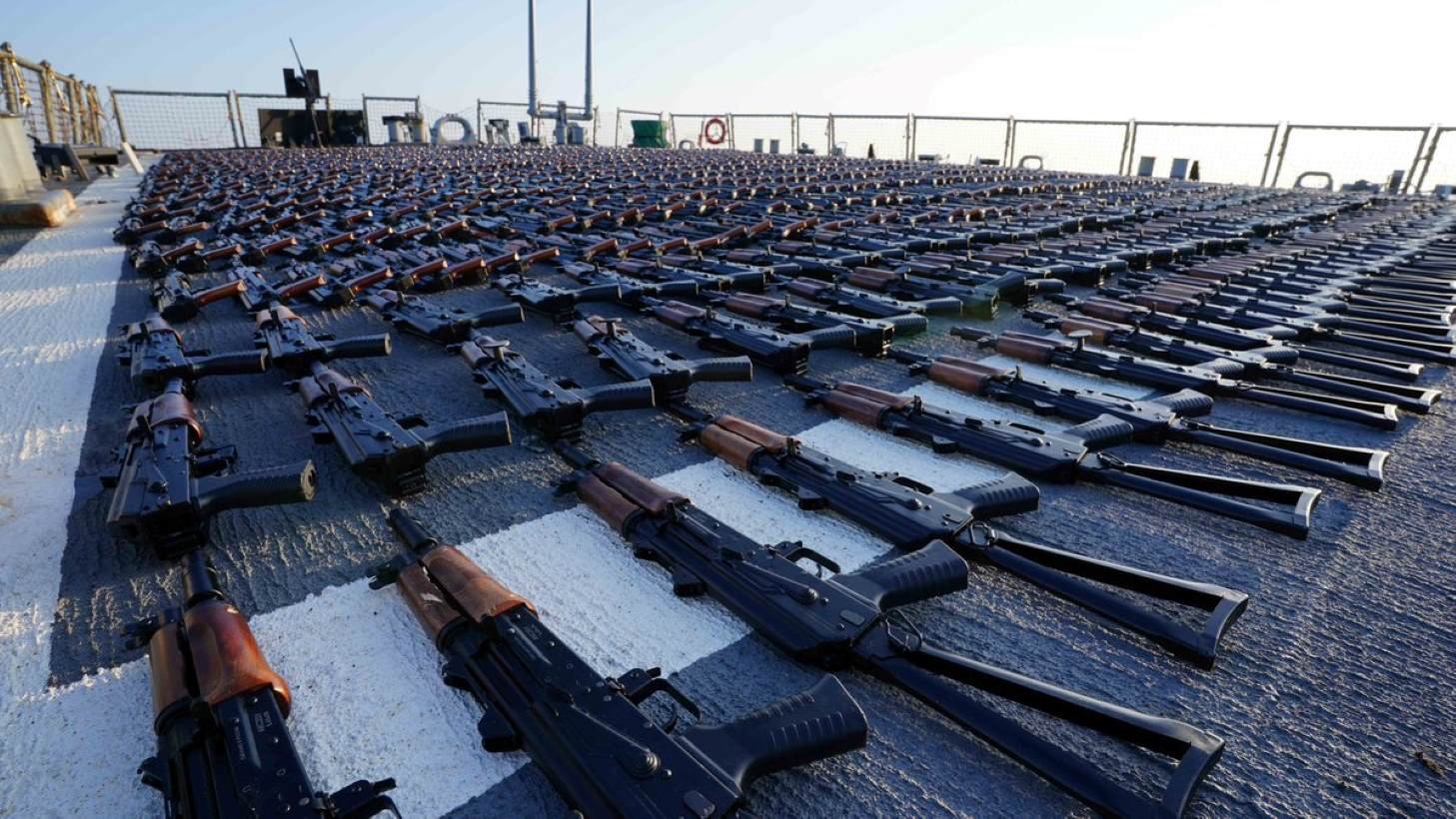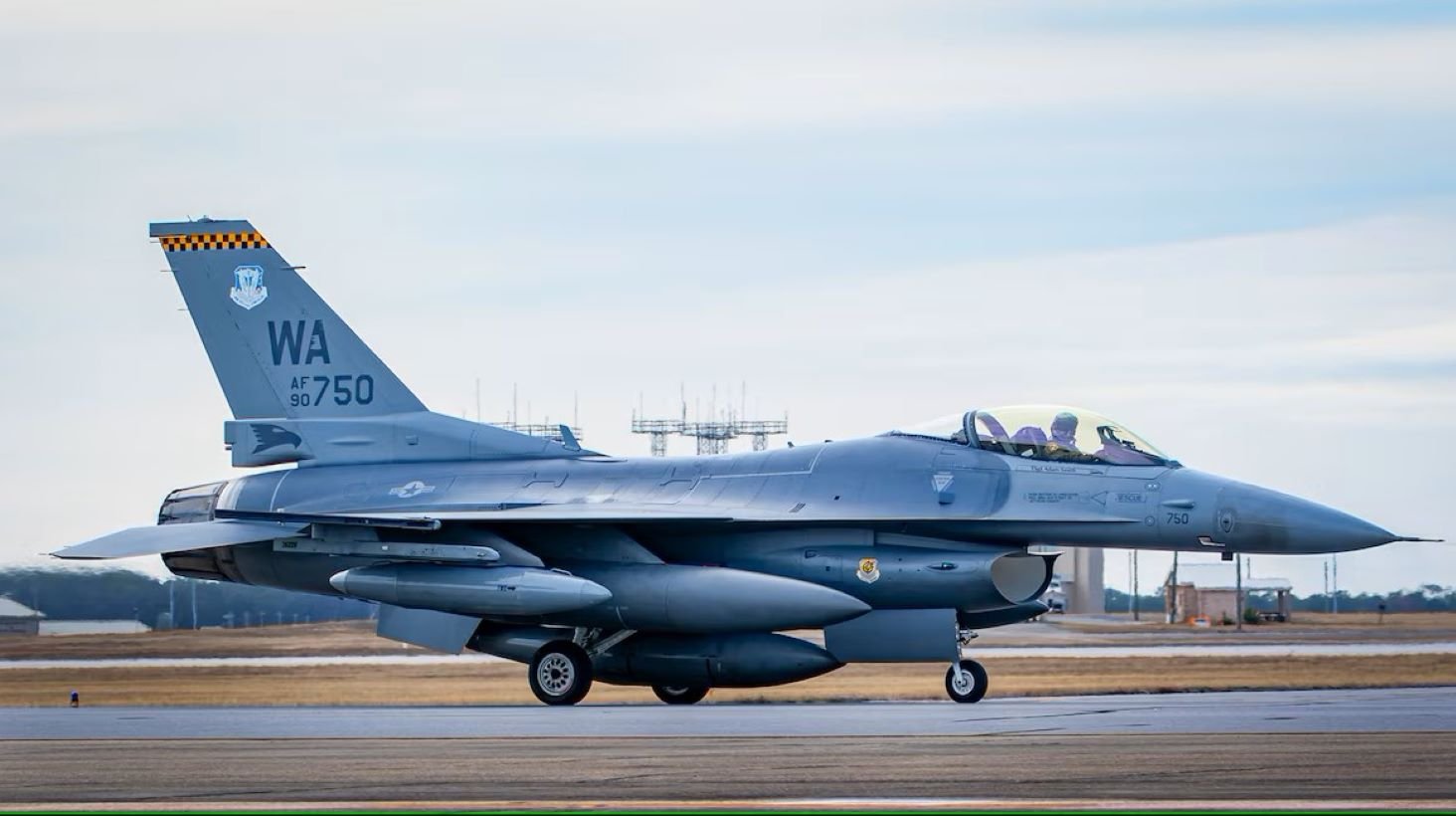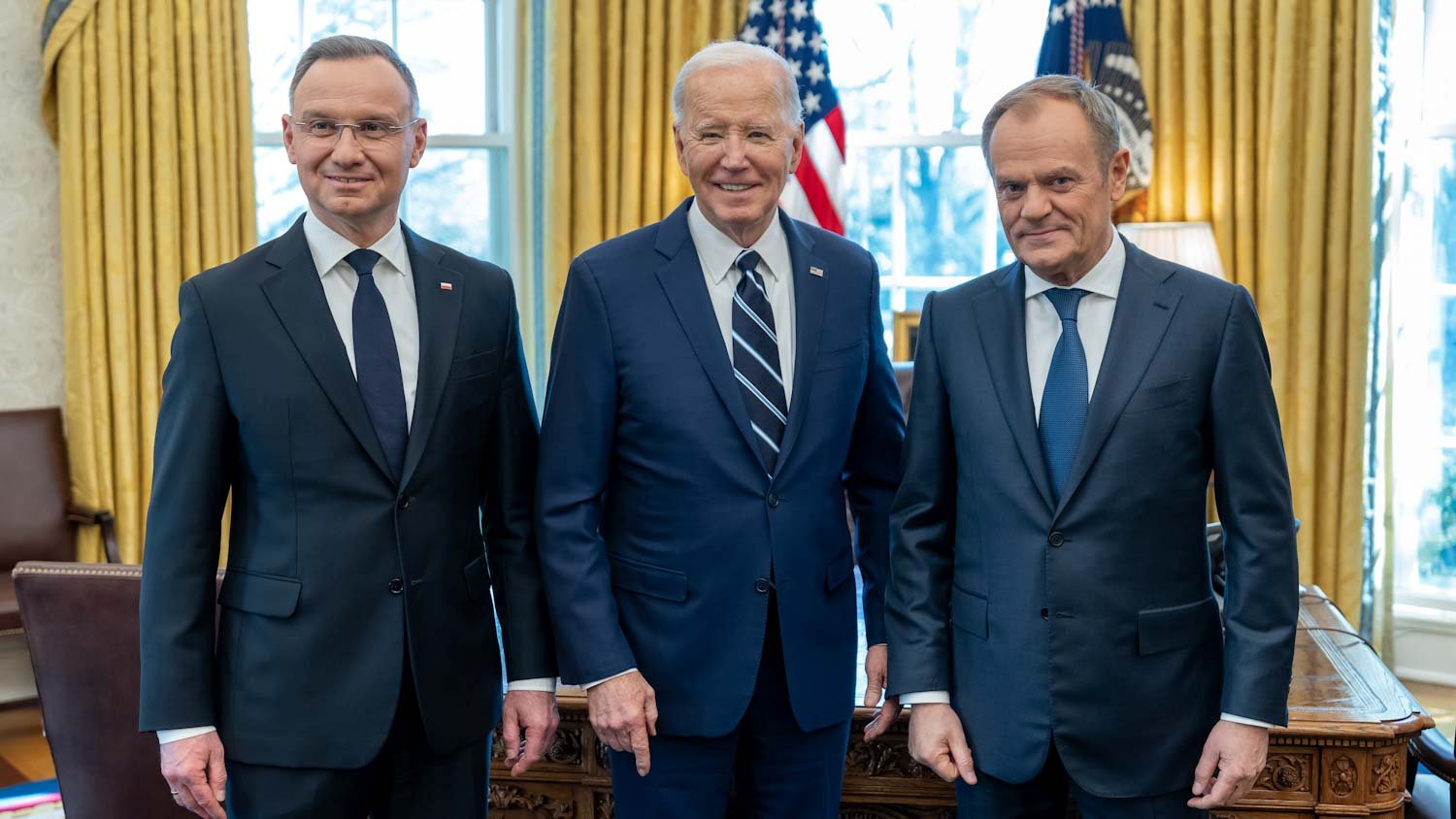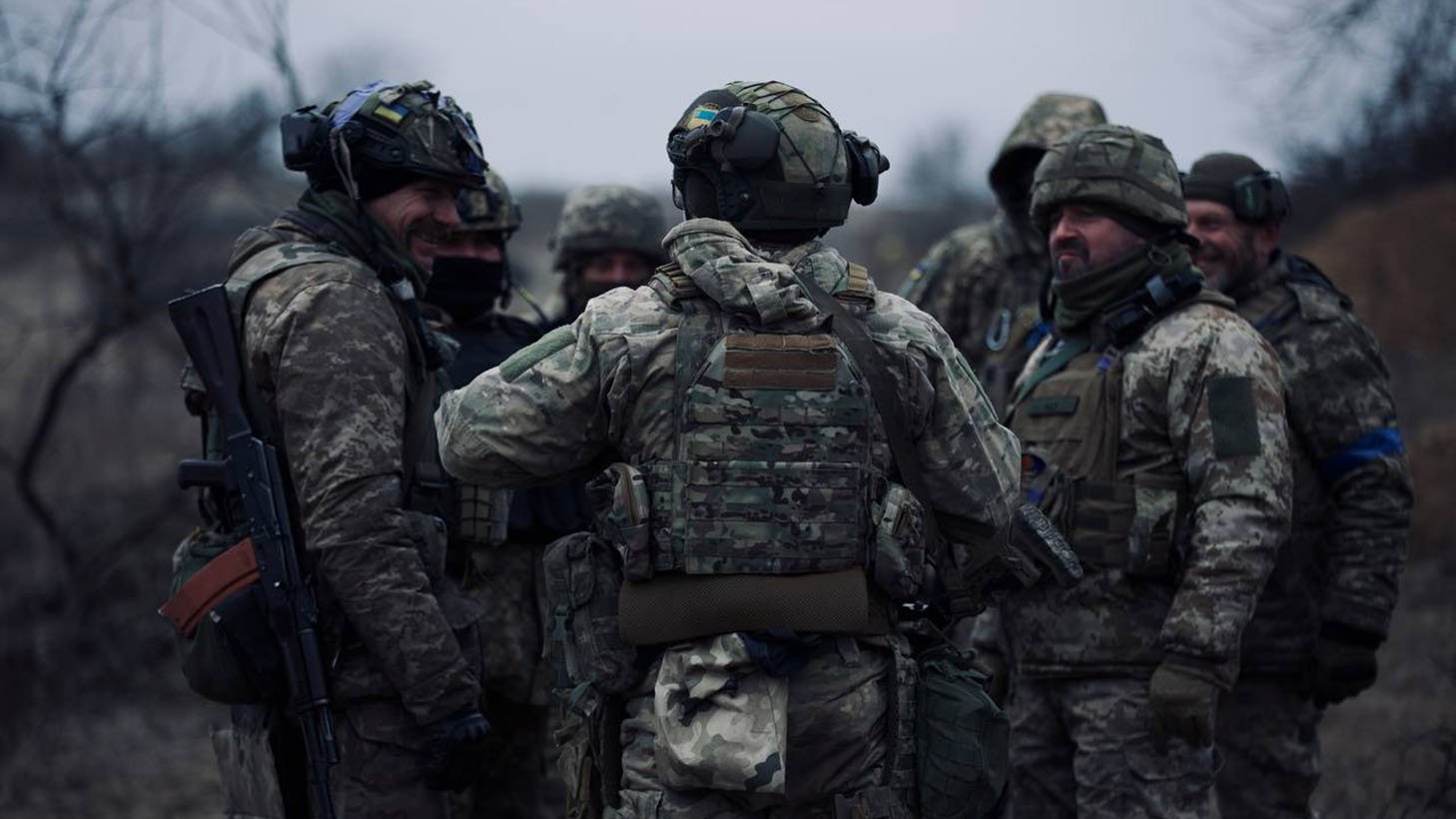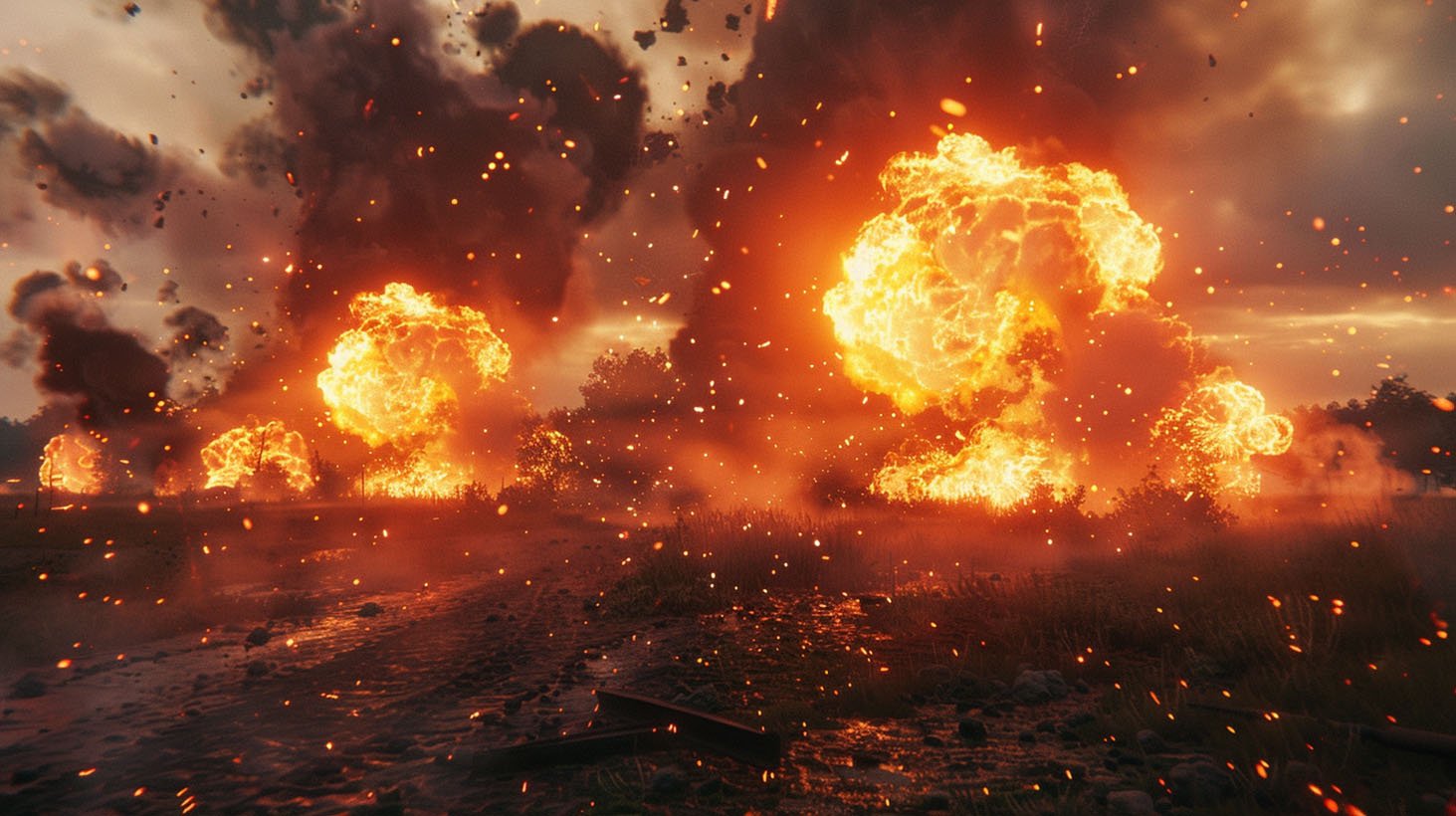-
Posts
146 -
Joined
-
Last visited
Content Type
Profiles
Uncrowned Armory News
Prepping Cookbook
Conspiracy Theories
Forums
Events
Everything posted by Uncrowned Guard
-
In a recent development that has caught the attention of the international community, Russian President Vladimir Putin has made a statement claiming that Russia is not seeking to capture Ukraine's second-largest city, Kharkiv. This announcement comes amidst ongoing tensions and military activities in the region. Putin's Assurance According to reports, President Putin has asserted that the Russian military's current operations are aimed at establishing a "security zone" rather than capturing the city of Kharkiv. This statement was made during his visit to China, where he emphasized the need for security measures along Russia's border region. The Russian leader's comments have been met with skepticism by some, considering the historical context of previous statements that have not always aligned with subsequent actions. Ukraine's Response In response to Putin's claims, Ukrainian officials have maintained a cautious stance. President Volodymyr Zelenskyy has warned of the potential for Russian forces to attempt the capture of Kharkiv, despite the assurances given by Putin. Ukrainian military officials have acknowledged that while the front line has stabilized, there have been Russian occupations of several border villages. The situation remains fluid, with the Ukrainian defense lines being tested by the advancing Russian troops. International Reactions The global community is closely monitoring the situation, with many leaders calling for restraint and a peaceful resolution to the conflict. The United States and European Union have reiterated their support for Ukraine's sovereignty and territorial integrity, urging Russia to cease military actions that could further escalate the situation. Meanwhile, international organizations and humanitarian groups are expressing concern over the potential for increased civilian casualties and displacement should hostilities intensify. In conclusion, the claim by President Putin that Russia is not seeking to capture Kharkiv has added a new dimension to the ongoing conflict in Ukraine. While it provides a glimmer of hope for a de-escalation of military activities, the reality on the ground and the history of the conflict suggest that vigilance and preparedness remain crucial for the Ukrainian defense forces. The international community continues to watch the developments with a keen eye, hoping for a peaceful resolution to the crisis. View full article
-
- russia-ukraine conflict
- kharkiv strategy
- (and 3 more)
-

Putin’s Pledge: Is Kharkiv Safe from Seizure?
Uncrowned Guard posted an article in Ongoing Conflicts
In a recent development that has caught the attention of the international community, Russian President Vladimir Putin has made a statement claiming that Russia is not seeking to capture Ukraine's second-largest city, Kharkiv. This announcement comes amidst ongoing tensions and military activities in the region. Putin's Assurance According to reports, President Putin has asserted that the Russian military's current operations are aimed at establishing a "security zone" rather than capturing the city of Kharkiv. This statement was made during his visit to China, where he emphasized the need for security measures along Russia's border region. The Russian leader's comments have been met with skepticism by some, considering the historical context of previous statements that have not always aligned with subsequent actions. Ukraine's Response In response to Putin's claims, Ukrainian officials have maintained a cautious stance. President Volodymyr Zelenskyy has warned of the potential for Russian forces to attempt the capture of Kharkiv, despite the assurances given by Putin. Ukrainian military officials have acknowledged that while the front line has stabilized, there have been Russian occupations of several border villages. The situation remains fluid, with the Ukrainian defense lines being tested by the advancing Russian troops. International Reactions The global community is closely monitoring the situation, with many leaders calling for restraint and a peaceful resolution to the conflict. The United States and European Union have reiterated their support for Ukraine's sovereignty and territorial integrity, urging Russia to cease military actions that could further escalate the situation. Meanwhile, international organizations and humanitarian groups are expressing concern over the potential for increased civilian casualties and displacement should hostilities intensify. In conclusion, the claim by President Putin that Russia is not seeking to capture Kharkiv has added a new dimension to the ongoing conflict in Ukraine. While it provides a glimmer of hope for a de-escalation of military activities, the reality on the ground and the history of the conflict suggest that vigilance and preparedness remain crucial for the Ukrainian defense forces. The international community continues to watch the developments with a keen eye, hoping for a peaceful resolution to the crisis.-
- russia-ukraine conflict
- kharkiv strategy
- (and 3 more)
-
In recent weeks, the pro-Palestine protests across U.S. universities have not only sparked discussions on geopolitical issues but also given rise to a peculiar scrutiny: the tents at the protest sites. A narrative has emerged suggesting that the presence of identical tents indicates a larger, orchestrated funding behind the movement. This article aims to dissect these claims with a factual lens and encourage a more informed dialogue. The Claim: Identical Tents as Evidence of Conspiracy Photographs from various university protests have been circulated online, highlighting matching tents as alleged proof of a grander scheme. Critics argue that the uniformity of these shelters points to external funding and organization, suggesting a conspiracy that transcends grassroots activism. The Reality: Budget Tents and Consumer Choices A closer examination of the tents in question reveals a different story. The models captured in the photographs are not exclusively identical; rather, they represent a variety of models, albeit with similar appearances. This is not unusual, considering the tents' origin: budget-friendly options readily available at retailers like Walmart. These tents are the most accessible choice for individuals seeking a cost-effective solution for temporary outdoor gatherings, including protests. Statistical Expectation vs. Conspiracy The presence of two to three matching tents among hundreds of protesters is statistically expected rather than indicative of a conspiracy. Given the affordability and availability of these tents, it's reasonable to assume they would be a common sight at any large gathering, protest or otherwise. The Bigger Picture: Funding Protests While the debate over the Israel-Palestine conflict is complex and deeply rooted, the focus on tents detracts from the substantive issues at hand. It is crucial to differentiate between legitimate inquiries into protest funding and the oversimplification of using common consumer products as a basis for conspiracy theories. Conclusion: Seeking Truth Beyond the Canvas As we navigate through a landscape rife with misinformation, it is imperative to approach such claims with skepticism and a demand for concrete evidence. The tents at the pro-Palestine protests, much like any other item purchased for practicality, are not the smoking gun some claim them to be. Instead, they serve as a reminder that sometimes, a tent is just a tent.
-
Israel's Arrow Defense System: A Shield Against Threats Israel celebrates the effective performance of its Arrow defense system amidst recent attacks from Iran. The successful interception of a majority of surface-to-surface missiles targeting Israeli territory highlights the crucial role played by the Arrow aerial defense system in safeguarding the nation. Intercepting Threats with Precision Israeli authorities credit the Arrow Defense System, supported by Israeli Air Force (IAF) fighter jets and allied assistance, for intercepting the majority of incoming missiles before breaching Israeli airspace. Despite minor damage inflicted on an IDF base in southern Israel, the system's swift and precise action prevented potentially devastating consequences. The Arrow Defense System: Cutting-Edge Technology The Arrow Defense System, colloquially known as Hetz, stands as a cornerstone of Israel's missile defense infrastructure. Developed in collaboration with the United States, this advanced system offers enhanced capabilities in countering ballistic missile threats, surpassing its predecessors like the MIM-104 Patriot surface-to-air missile. View full article
-
- israel
- arrow defense system
- (and 3 more)
-
Israel's Arrow Defense System: A Shield Against Threats Israel celebrates the effective performance of its Arrow defense system amidst recent attacks from Iran. The successful interception of a majority of surface-to-surface missiles targeting Israeli territory highlights the crucial role played by the Arrow aerial defense system in safeguarding the nation. Intercepting Threats with Precision Israeli authorities credit the Arrow Defense System, supported by Israeli Air Force (IAF) fighter jets and allied assistance, for intercepting the majority of incoming missiles before breaching Israeli airspace. Despite minor damage inflicted on an IDF base in southern Israel, the system's swift and precise action prevented potentially devastating consequences. The Arrow Defense System: Cutting-Edge Technology The Arrow Defense System, colloquially known as Hetz, stands as a cornerstone of Israel's missile defense infrastructure. Developed in collaboration with the United States, this advanced system offers enhanced capabilities in countering ballistic missile threats, surpassing its predecessors like the MIM-104 Patriot surface-to-air missile.
-
- israel
- arrow defense system
- (and 3 more)
-
Demonstration of Hybrid Technology In February 2024, the Rapid Capabilities and Critical Technologies Office (RCCTO) showcased the operational advantages of hybrid vehicles to distinguished guests. The demonstration highlighted features such as extended silent watch, silent mobility, increased on-board power generation, and off-board power export. Tactical Hybrid Electric Vehicle Program The RCCTO’s Tactical Hybrid Electric Vehicle program aims to demonstrate the operational effectiveness and automotive performance of standard tactical vehicles while validating the benefits of hybridization. Hybrid electric technology integration enhances vehicles' ability to operate silently over greater distances and provides more power for weapon systems and off-vehicle power grids. Advancing Soldier Capabilities Michael E. Foster, Sr., Director of the Rapid Acquisition Prototyping Project Office within the RCCTO, emphasized the significance of the hybrid vehicle advancements for soldiers. These innovations offer silent mobility capability, exportable power, increased vehicle range with batteries, and reduced heat signature and sound, providing soldiers with enhanced capabilities on the battlefield. Investing in Future Technologies Lt. Gen. Robert A. Rasch, Jr., Director of the RCCTO, underscored the importance of ongoing investment and development in hybrid vehicle technologies. By evaluating innovations, bridging gaps, and collaborating with industry partners, the military strengthens its ability to provide soldiers with the best tools and resources, ultimately enhancing their safety and capabilities in frontline operations. View full article
-
- hybrid vehicles
- military technology
- (and 4 more)
-
Demonstration of Hybrid Technology In February 2024, the Rapid Capabilities and Critical Technologies Office (RCCTO) showcased the operational advantages of hybrid vehicles to distinguished guests. The demonstration highlighted features such as extended silent watch, silent mobility, increased on-board power generation, and off-board power export. Tactical Hybrid Electric Vehicle Program The RCCTO’s Tactical Hybrid Electric Vehicle program aims to demonstrate the operational effectiveness and automotive performance of standard tactical vehicles while validating the benefits of hybridization. Hybrid electric technology integration enhances vehicles' ability to operate silently over greater distances and provides more power for weapon systems and off-vehicle power grids. Advancing Soldier Capabilities Michael E. Foster, Sr., Director of the Rapid Acquisition Prototyping Project Office within the RCCTO, emphasized the significance of the hybrid vehicle advancements for soldiers. These innovations offer silent mobility capability, exportable power, increased vehicle range with batteries, and reduced heat signature and sound, providing soldiers with enhanced capabilities on the battlefield. Investing in Future Technologies Lt. Gen. Robert A. Rasch, Jr., Director of the RCCTO, underscored the importance of ongoing investment and development in hybrid vehicle technologies. By evaluating innovations, bridging gaps, and collaborating with industry partners, the military strengthens its ability to provide soldiers with the best tools and resources, ultimately enhancing their safety and capabilities in frontline operations.
-
- hybrid vehicles
- military technology
- (and 4 more)
-
The U.S. government transferred a significant arsenal, including over 5,000 AK-47s, machine guns, sniper rifles, RPG-7s, and more than 500,000 rounds of 7.62mm ammunition, to the Ukrainian armed forces on April 4, 2024. This move aimed to bolster Ukraine's defense against Russia's invasion. The weapons, obtained through the Department of Justice's civil forfeiture claims against Iran's Islamic Revolutionary Guard Corps (IRGC) on December 1, 2023, were originally seized by U.S. Central Command and partner naval forces from stateless vessels between May 22, 2021, and February 15, 2023. These munitions were intended for transfer from the IRGC to the Houthis in Yemen, violating the United Nations Security Council Resolution 2216. The transfer underscores the U.S. commitment to countering Iran's support for armed groups in the region and enhancing regional security. Origin and Transfer The U.S. government handed over a substantial arsenal to the Ukrainian armed forces, comprising various firearms and ammunition, to aid in Ukraine's defense against Russia's invasion. Legal Acquisition These weapons were acquired through civil forfeiture claims against Iran's Islamic Revolutionary Guard Corps (IRGC) by the Department of Justice on December 1, 2023. Counter-Terrorism Efforts The munitions were seized by U.S. Central Command and partner naval forces from stateless vessels, indicating a violation of the UN Security Council Resolution 2216. The transfer demonstrates the U.S.'s commitment to thwarting Iran's support for armed groups in the region and maintaining international security. View full article
-
- u.s. government
- weapons transfer
- (and 6 more)
-
The U.S. government transferred a significant arsenal, including over 5,000 AK-47s, machine guns, sniper rifles, RPG-7s, and more than 500,000 rounds of 7.62mm ammunition, to the Ukrainian armed forces on April 4, 2024. This move aimed to bolster Ukraine's defense against Russia's invasion. The weapons, obtained through the Department of Justice's civil forfeiture claims against Iran's Islamic Revolutionary Guard Corps (IRGC) on December 1, 2023, were originally seized by U.S. Central Command and partner naval forces from stateless vessels between May 22, 2021, and February 15, 2023. These munitions were intended for transfer from the IRGC to the Houthis in Yemen, violating the United Nations Security Council Resolution 2216. The transfer underscores the U.S. commitment to countering Iran's support for armed groups in the region and enhancing regional security. Origin and Transfer The U.S. government handed over a substantial arsenal to the Ukrainian armed forces, comprising various firearms and ammunition, to aid in Ukraine's defense against Russia's invasion. Legal Acquisition These weapons were acquired through civil forfeiture claims against Iran's Islamic Revolutionary Guard Corps (IRGC) by the Department of Justice on December 1, 2023. Counter-Terrorism Efforts The munitions were seized by U.S. Central Command and partner naval forces from stateless vessels, indicating a violation of the UN Security Council Resolution 2216. The transfer demonstrates the U.S.'s commitment to thwarting Iran's support for armed groups in the region and maintaining international security.
-
- u.s. government
- weapons transfer
- (and 6 more)
-

Escalating Tensions: Russia's Agenda Towards Kazakhstan Exposed
Uncrowned Guard posted an article in Military News
Unveiling the Threat: Shockwaves from a Leaked Recording A leaked audio recording featuring Russian General and State Duma deputy Andriy Gurulyov has ignited concerns within diplomatic circles, unveiling a disturbing plan for potential Russian aggression targeting Kazakhstan. Gurulyov's unequivocal statements in the recording indicate Kazakhstan as the next focal point for Russian expansionism, following the invasion of Ukraine. Kazakhstan in the Crosshairs: The Grim Reality Revealed In the leaked recording, Gurulyov discusses Russia's military buildup against Kazakhstan, attributing it to alleged non-compliance with Kremlin directives. He suggests that decisions regarding Kazakhstan's fate have already been made, heightening fears over the country's security. This revelation emerges amidst escalating tensions and increasing demonization of Kazakhstan by Russian media, reminiscent of the rhetoric directed against Ukraine in previous years. Fueling the Flames: Propaganda and Anti-Kazakhstan Sentiment Former KGB operative and State Duma deputy Andriy Lugovoy adds to the anti-Kazakhstan sentiment by producing a propaganda film accusing Kazakhstan of Russophobia. Meanwhile, State Duma deputy Yevgeny Fedorov questions Kazakhstan's sovereignty, proposing limitations such as a ban on joining NATO until territorial disputes are resolved. The intensifying rhetoric and legal challenges underscore Russia's aggressive stance towards its neighbor. The leaked recording and subsequent reactions highlight the precarious geopolitical landscape in Eurasia, with Kazakhstan potentially facing a similar fate as Ukraine amidst escalating tensions and threats of Russian aggression.-
- russia
- kazakhstan
- (and 8 more)
-
Unveiling the Threat: Shockwaves from a Leaked Recording A leaked audio recording featuring Russian General and State Duma deputy Andriy Gurulyov has ignited concerns within diplomatic circles, unveiling a disturbing plan for potential Russian aggression targeting Kazakhstan. Gurulyov's unequivocal statements in the recording indicate Kazakhstan as the next focal point for Russian expansionism, following the invasion of Ukraine. Kazakhstan in the Crosshairs: The Grim Reality Revealed In the leaked recording, Gurulyov discusses Russia's military buildup against Kazakhstan, attributing it to alleged non-compliance with Kremlin directives. He suggests that decisions regarding Kazakhstan's fate have already been made, heightening fears over the country's security. This revelation emerges amidst escalating tensions and increasing demonization of Kazakhstan by Russian media, reminiscent of the rhetoric directed against Ukraine in previous years. Fueling the Flames: Propaganda and Anti-Kazakhstan Sentiment Former KGB operative and State Duma deputy Andriy Lugovoy adds to the anti-Kazakhstan sentiment by producing a propaganda film accusing Kazakhstan of Russophobia. Meanwhile, State Duma deputy Yevgeny Fedorov questions Kazakhstan's sovereignty, proposing limitations such as a ban on joining NATO until territorial disputes are resolved. The intensifying rhetoric and legal challenges underscore Russia's aggressive stance towards its neighbor. The leaked recording and subsequent reactions highlight the precarious geopolitical landscape in Eurasia, with Kazakhstan potentially facing a similar fate as Ukraine amidst escalating tensions and threats of Russian aggression. View full article
-
- russia
- kazakhstan
- (and 8 more)
-
Accelerating the advancement of aerial combat capabilities, the 96th Test Wing and 53rd Wing have welcomed the first three F-16 Fighting Falcons to participate in the Viper Experimentation and Next-gen Operations Model – Autonomy Flying Testbed (VENOM-AFT) program. Driving Autonomous Innovation VENOM-AFT, aimed at expediting the testing of autonomy software on crewed and uncrewed aircraft, serves as a pivotal initiative funded to redefine air combat paradigms. It complements Eglin Air Force Base's autonomy data and artificial intelligence experimentation proving ground, offering insights crucial for the Collaborative Combat Aircraft program and other autonomy developers. Modifying F-16s for Testing The next phase for the VENOM program involves transforming the F-16 aircraft into test platforms to swiftly evaluate autonomous capabilities. This step marks a significant stride towards ushering in a new era of aviation, enabling the integration of novel autonomous functions for both present and future crewed and uncrewed platforms. Operational Collaboration and Testing Similar to F-16 and F-15 testing at Eglin, the VENOM program is set to undergo rigorous developmental and operational testing facilitated by the 40th Flight Test Squadron and the 85th Test and Evaluation Squadron. The integration of both developmental test and operational test pilots operating from the same location fosters daily collaboration, facilitating knowledge sharing and streamlined lessons learned. Human Oversight in Autonomy During testing, pilots will remain in the cockpit to oversee autonomy and ensure that flight and mission systems test objectives are achieved. The concept of 'human-on-the-loop' emphasizes real-time pilot involvement in autonomy, ensuring the ability to intervene and control specific algorithms as necessary, highlighting the critical role of human oversight in autonomous operations. Enhancing Autonomy Performance Operators will offer feedback throughout modeling, simulation, and post-flight stages to autonomy developers, aiding in improving performance over time and validating the appropriateness of autonomy decisions prior to and during flight. This iterative process aims to refine autonomy capabilities and ensure they align with mission objectives. Driving Rapid Tactical Autonomy Development The overarching goal of the VENOM program is to facilitate rapid iteration and expansion of knowledge for potential autonomy and payload solutions. Emphasizing "speed-to-ramp," the program prioritizes swift yet safe development to expedite the deployment of the Collaborative Combat Aircraft and other autonomous systems, further bolstering the Air Force's capabilities in the ever-evolving landscape of aerial combat.
-
- f-16 fighting falcons
- venom-aft program
- (and 8 more)
-
Accelerating the advancement of aerial combat capabilities, the 96th Test Wing and 53rd Wing have welcomed the first three F-16 Fighting Falcons to participate in the Viper Experimentation and Next-gen Operations Model – Autonomy Flying Testbed (VENOM-AFT) program. Driving Autonomous Innovation VENOM-AFT, aimed at expediting the testing of autonomy software on crewed and uncrewed aircraft, serves as a pivotal initiative funded to redefine air combat paradigms. It complements Eglin Air Force Base's autonomy data and artificial intelligence experimentation proving ground, offering insights crucial for the Collaborative Combat Aircraft program and other autonomy developers. Modifying F-16s for Testing The next phase for the VENOM program involves transforming the F-16 aircraft into test platforms to swiftly evaluate autonomous capabilities. This step marks a significant stride towards ushering in a new era of aviation, enabling the integration of novel autonomous functions for both present and future crewed and uncrewed platforms. Operational Collaboration and Testing Similar to F-16 and F-15 testing at Eglin, the VENOM program is set to undergo rigorous developmental and operational testing facilitated by the 40th Flight Test Squadron and the 85th Test and Evaluation Squadron. The integration of both developmental test and operational test pilots operating from the same location fosters daily collaboration, facilitating knowledge sharing and streamlined lessons learned. Human Oversight in Autonomy During testing, pilots will remain in the cockpit to oversee autonomy and ensure that flight and mission systems test objectives are achieved. The concept of 'human-on-the-loop' emphasizes real-time pilot involvement in autonomy, ensuring the ability to intervene and control specific algorithms as necessary, highlighting the critical role of human oversight in autonomous operations. Enhancing Autonomy Performance Operators will offer feedback throughout modeling, simulation, and post-flight stages to autonomy developers, aiding in improving performance over time and validating the appropriateness of autonomy decisions prior to and during flight. This iterative process aims to refine autonomy capabilities and ensure they align with mission objectives. Driving Rapid Tactical Autonomy Development The overarching goal of the VENOM program is to facilitate rapid iteration and expansion of knowledge for potential autonomy and payload solutions. Emphasizing "speed-to-ramp," the program prioritizes swift yet safe development to expedite the deployment of the Collaborative Combat Aircraft and other autonomous systems, further bolstering the Air Force's capabilities in the ever-evolving landscape of aerial combat. View full article
-
- f-16 fighting falcons
- venom-aft program
- (and 8 more)
-
Addressing Immediate Needs Amid Congressional Stalemate The Biden administration has unveiled a new military aid package for Ukraine, valued at $300 million, aiming to support Kyiv amidst ongoing conflict. This decision comes as additional funds for Ukraine face obstruction from Republican leaders in Congress, leading the White House to explore alternative funding avenues. The package, funded through unexpected Pentagon contract savings, focuses on supplying artillery rounds and munitions, particularly for High Mobility Artillery Rocket Systems (HIMARS), though it's acknowledged as a temporary solution to Ukraine's extensive battlefield requirements. Challenges in Sustaining Support The provision of this aid package, while crucial, is recognized as insufficient for Ukraine's long-term needs. U.S. National Security Advisor Jake Sullivan highlighted the limited duration the ammunition could support Ukraine's military efforts, emphasizing the urgent need for a more sustainable funding solution. Pentagon Press Secretary Major General Pat Ryder also noted the improbability of consistently utilizing contract savings as a means to support Kyiv, indicating a pressing need for legislative action to secure further aid. International Efforts and Strategic Implications As the U.S. seeks ways to bolster Ukraine's defenses, international collaboration and discussions on further support are underway. The announcement coincided with a meeting between Polish leadership and President Joe Biden, underlining the importance of international backing for Ukraine. The potential use of seized Russian assets to finance military assistance for Ukraine was also mentioned as an option being explored. Amidst these developments, Ukraine President Volodymyr Zelenskiy reported an improved strategic position against Russian forces but warned of the potential for new offensives and the critical impact of ongoing weapon shortages. Additionally, Denmark has committed to providing further military aid to Ukraine, and the European Union is considering a significant increase in funds for military shipments, emphasizing the global dimension of support for Ukraine's resistance against Russian aggression. View full article
-
- us military aid
- ukraine
- (and 6 more)
-
Addressing Immediate Needs Amid Congressional Stalemate The Biden administration has unveiled a new military aid package for Ukraine, valued at $300 million, aiming to support Kyiv amidst ongoing conflict. This decision comes as additional funds for Ukraine face obstruction from Republican leaders in Congress, leading the White House to explore alternative funding avenues. The package, funded through unexpected Pentagon contract savings, focuses on supplying artillery rounds and munitions, particularly for High Mobility Artillery Rocket Systems (HIMARS), though it's acknowledged as a temporary solution to Ukraine's extensive battlefield requirements. Challenges in Sustaining Support The provision of this aid package, while crucial, is recognized as insufficient for Ukraine's long-term needs. U.S. National Security Advisor Jake Sullivan highlighted the limited duration the ammunition could support Ukraine's military efforts, emphasizing the urgent need for a more sustainable funding solution. Pentagon Press Secretary Major General Pat Ryder also noted the improbability of consistently utilizing contract savings as a means to support Kyiv, indicating a pressing need for legislative action to secure further aid. International Efforts and Strategic Implications As the U.S. seeks ways to bolster Ukraine's defenses, international collaboration and discussions on further support are underway. The announcement coincided with a meeting between Polish leadership and President Joe Biden, underlining the importance of international backing for Ukraine. The potential use of seized Russian assets to finance military assistance for Ukraine was also mentioned as an option being explored. Amidst these developments, Ukraine President Volodymyr Zelenskiy reported an improved strategic position against Russian forces but warned of the potential for new offensives and the critical impact of ongoing weapon shortages. Additionally, Denmark has committed to providing further military aid to Ukraine, and the European Union is considering a significant increase in funds for military shipments, emphasizing the global dimension of support for Ukraine's resistance against Russian aggression.
-
- us military aid
- ukraine
- (and 6 more)
-
Staggering Casualties and Equipment Losses In the latest update from the conflict in Ukraine, Kyiv reports substantial Russian military losses over the past week, highlighting the intensifying toll on Moscow's forces as they make incremental advances on the northeast front lines. According to Ukraine's military, Russia has suffered the loss of more than 7,200 troops, along with significant equipment casualties, including 278 artillery systems and over 200 armored personnel vehicles (APVs). These figures contribute to the overall count of Russian casualties since the onset of the conflict, which Ukraine estimates at over 424,000 troops. Verification Challenges and the War's Attritional Nature While these numbers provided by Ukraine offer a glimpse into the severe impact of the ongoing conflict, independent verification remains elusive. The reported figures align with assessments from defense analysts, suggesting a plausible tally when considering overall casualties, missing personnel, and non-combat fatalities. This attritional warfare approach, characterized by high casualty rates and substantial equipment losses, reflects Russia's commitment to a strategy that has exerted increased pressure on Ukrainian defenses, despite the heavy toll on its own forces. Strategic and Material Challenges Both Russia and Ukraine continue to prioritize the maintenance and replenishment of their artillery and armored capabilities, critical for sustaining their respective military efforts. Recent engagements, such as Kyiv's reported attack on the Russian patrol ship Sergey Kotov, underscore the ongoing naval aspect of the conflict, with Russia's total naval losses reported by Ukraine reaching 26 vessels. The strategic advances and retreats, coupled with the attritional losses on both sides, underscore the protracted nature of the conflict and the significant resources being expended. As the war drags on, the international community keeps a close watch on the developments, aware of the difficulty in obtaining accurate casualty and equipment loss figures. Nonetheless, the reported numbers serve as a stark reminder of the conflict's high human and material costs, with both sides continuing to suffer significant losses as they vie for strategic advantages along the front lines. View full article
-
- russia-ukraine war
- military casualties
- (and 6 more)
-
Staggering Casualties and Equipment Losses In the latest update from the conflict in Ukraine, Kyiv reports substantial Russian military losses over the past week, highlighting the intensifying toll on Moscow's forces as they make incremental advances on the northeast front lines. According to Ukraine's military, Russia has suffered the loss of more than 7,200 troops, along with significant equipment casualties, including 278 artillery systems and over 200 armored personnel vehicles (APVs). These figures contribute to the overall count of Russian casualties since the onset of the conflict, which Ukraine estimates at over 424,000 troops. Verification Challenges and the War's Attritional Nature While these numbers provided by Ukraine offer a glimpse into the severe impact of the ongoing conflict, independent verification remains elusive. The reported figures align with assessments from defense analysts, suggesting a plausible tally when considering overall casualties, missing personnel, and non-combat fatalities. This attritional warfare approach, characterized by high casualty rates and substantial equipment losses, reflects Russia's commitment to a strategy that has exerted increased pressure on Ukrainian defenses, despite the heavy toll on its own forces. Strategic and Material Challenges Both Russia and Ukraine continue to prioritize the maintenance and replenishment of their artillery and armored capabilities, critical for sustaining their respective military efforts. Recent engagements, such as Kyiv's reported attack on the Russian patrol ship Sergey Kotov, underscore the ongoing naval aspect of the conflict, with Russia's total naval losses reported by Ukraine reaching 26 vessels. The strategic advances and retreats, coupled with the attritional losses on both sides, underscore the protracted nature of the conflict and the significant resources being expended. As the war drags on, the international community keeps a close watch on the developments, aware of the difficulty in obtaining accurate casualty and equipment loss figures. Nonetheless, the reported numbers serve as a stark reminder of the conflict's high human and material costs, with both sides continuing to suffer significant losses as they vie for strategic advantages along the front lines.
-
- russia-ukraine war
- military casualties
- (and 6 more)
-
Intensifying Production: Russia's Strategic Advantage As the conflict in Ukraine continues, Russia appears to be gaining a significant strategic advantage through its ability to produce artillery munitions at a pace nearly three times that of the US and Europe combined. According to NATO intelligence and a CNN exclusive report, Russia's manufacturing capabilities allow it to output approximately 250,000 artillery shells monthly, totaling around 3 million a year. In contrast, the collective capacity of the US and Europe amounts to about 1.2 million munitions annually, signaling a considerable gap in supply for Ukraine. Impact on the Ground: A Matter of Quantity and Capacity The disparity in artillery production is becoming a critical factor as both sides prepare for potential offensives. On the battlefield, Russia is reportedly firing around 10,000 shells daily, starkly outmatching Ukraine's output of 2,000 shells per day. This imbalance not only underscores the current "production war" but also poses significant challenges for Ukraine, especially in light of financial and logistical constraints faced by its allies. The situation is further exacerbated by stalling US aid and increasing Republican opposition in Congress, leaving Ukraine in a precarious position as it faces both ammunition scarcity and manpower shortages. The Road Ahead: Long-Term Strategies and Challenges Efforts are underway to mitigate the shortfall, with European nations stepping up and a German defense company planning to establish an ammunition factory in Ukraine. However, Russia's full-throttle production, supported by imports from Iran and North Korea, continues to pressurize Ukraine's defenses. While the US and its allies aim to catch up by enhancing their production capabilities, the immediate future looks challenging for Ukraine. Intelligence officials remain cautious, predicting that without a swift resumption of aid, the strategic balance may tilt further in Russia's favor, affecting the outcome of the conflict. The ongoing situation highlights the complex interplay between military capability, economic power, and political will, as both sides navigate the uncertain terrain of modern warfare. As the international community watches closely, the resilience and adaptability of Ukraine and its allies are being tested like never before. View full article
-
- russia-ukraine conflict
- artillery production
- (and 6 more)
-
Intensifying Production: Russia's Strategic Advantage As the conflict in Ukraine continues, Russia appears to be gaining a significant strategic advantage through its ability to produce artillery munitions at a pace nearly three times that of the US and Europe combined. According to NATO intelligence and a CNN exclusive report, Russia's manufacturing capabilities allow it to output approximately 250,000 artillery shells monthly, totaling around 3 million a year. In contrast, the collective capacity of the US and Europe amounts to about 1.2 million munitions annually, signaling a considerable gap in supply for Ukraine. Impact on the Ground: A Matter of Quantity and Capacity The disparity in artillery production is becoming a critical factor as both sides prepare for potential offensives. On the battlefield, Russia is reportedly firing around 10,000 shells daily, starkly outmatching Ukraine's output of 2,000 shells per day. This imbalance not only underscores the current "production war" but also poses significant challenges for Ukraine, especially in light of financial and logistical constraints faced by its allies. The situation is further exacerbated by stalling US aid and increasing Republican opposition in Congress, leaving Ukraine in a precarious position as it faces both ammunition scarcity and manpower shortages. The Road Ahead: Long-Term Strategies and Challenges Efforts are underway to mitigate the shortfall, with European nations stepping up and a German defense company planning to establish an ammunition factory in Ukraine. However, Russia's full-throttle production, supported by imports from Iran and North Korea, continues to pressurize Ukraine's defenses. While the US and its allies aim to catch up by enhancing their production capabilities, the immediate future looks challenging for Ukraine. Intelligence officials remain cautious, predicting that without a swift resumption of aid, the strategic balance may tilt further in Russia's favor, affecting the outcome of the conflict. The ongoing situation highlights the complex interplay between military capability, economic power, and political will, as both sides navigate the uncertain terrain of modern warfare. As the international community watches closely, the resilience and adaptability of Ukraine and its allies are being tested like never before.
-
- russia-ukraine conflict
- artillery production
- (and 6 more)
-
End of an Era Sweden, a nation renowned for over two centuries of neutrality, is poised to embark on a significant transformation by joining the North Atlantic Treaty Organization (NATO). This move marks a departure from Sweden's longstanding policy of nonalignment, a practice that has defined its international stance since the conclusion of its last military engagement in 1814. Prime Minister Ulf Kristersson underscored the magnitude of this shift, acknowledging the end of Sweden's era of neutrality and nonalignment. This decision, driven by the geopolitical upheavals following Russia's invasion of Ukraine in 2022, reflects Sweden's response to the evolving security landscape in Europe. From Neutrality to NATO The concept of neutrality has deep roots in Sweden's history, dating back to the early 19th century. It enabled Sweden to avoid entanglement in the conflicts of major powers, fostering peace and prosperity within its borders. However, the invasion of Ukraine by Russia signaled a profound change in the global order, prompting Sweden to reconsider its stance on military alliances. The shift in public opinion was swift and significant, with support for NATO membership rising sharply in the wake of the invasion. This reevaluation of Sweden's security policy culminates in its pending membership in NATO, an alliance that promises collective defense in the face of external threats. Security Concerns and Military Preparedness The transition to NATO membership brings with it new security considerations. While the prospect of enhanced protection under the alliance's umbrella is reassuring, it also introduces anxieties about the potential for heightened tensions with Russia. Sweden's history of military readiness, despite its neutral status, underscores a pragmatic approach to defense. The nation has historically maintained a capable military force, adapting its strategy to the geopolitical realities of each era. The reestablishment of military units and the return of conscription in recent years reflect Sweden's commitment to ensuring its security in an increasingly uncertain world. Sweden's Role on the Global Stage Sweden's journey from neutrality to NATO membership does not signify a departure from its values as a proponent of peace and humanitarianism. Instead, it represents an evolution in its approach to safeguarding these ideals in a changing global context. As Sweden prepares to formalize its alliance with NATO, it remains committed to contributing to international stability and upholding the principles that have long guided its foreign policy. This historic decision, rooted in a pragmatic assessment of contemporary security challenges, marks a new chapter in Sweden's engagement with the world. Sweden's impending NATO membership is a testament to the dynamic nature of global politics and the necessity of adapting to new security realities. While this move signifies a departure from centuries of neutrality, it also affirms Sweden's ongoing commitment to peace, stability, and cooperation on the international stage. As Sweden navigates this transition, it carries forward its legacy of diplomacy and humanitarian leadership into a new era of collective defense and geopolitical engagement. View full article
-
End of an Era Sweden, a nation renowned for over two centuries of neutrality, is poised to embark on a significant transformation by joining the North Atlantic Treaty Organization (NATO). This move marks a departure from Sweden's longstanding policy of nonalignment, a practice that has defined its international stance since the conclusion of its last military engagement in 1814. Prime Minister Ulf Kristersson underscored the magnitude of this shift, acknowledging the end of Sweden's era of neutrality and nonalignment. This decision, driven by the geopolitical upheavals following Russia's invasion of Ukraine in 2022, reflects Sweden's response to the evolving security landscape in Europe. From Neutrality to NATO The concept of neutrality has deep roots in Sweden's history, dating back to the early 19th century. It enabled Sweden to avoid entanglement in the conflicts of major powers, fostering peace and prosperity within its borders. However, the invasion of Ukraine by Russia signaled a profound change in the global order, prompting Sweden to reconsider its stance on military alliances. The shift in public opinion was swift and significant, with support for NATO membership rising sharply in the wake of the invasion. This reevaluation of Sweden's security policy culminates in its pending membership in NATO, an alliance that promises collective defense in the face of external threats. Security Concerns and Military Preparedness The transition to NATO membership brings with it new security considerations. While the prospect of enhanced protection under the alliance's umbrella is reassuring, it also introduces anxieties about the potential for heightened tensions with Russia. Sweden's history of military readiness, despite its neutral status, underscores a pragmatic approach to defense. The nation has historically maintained a capable military force, adapting its strategy to the geopolitical realities of each era. The reestablishment of military units and the return of conscription in recent years reflect Sweden's commitment to ensuring its security in an increasingly uncertain world. Sweden's Role on the Global Stage Sweden's journey from neutrality to NATO membership does not signify a departure from its values as a proponent of peace and humanitarianism. Instead, it represents an evolution in its approach to safeguarding these ideals in a changing global context. As Sweden prepares to formalize its alliance with NATO, it remains committed to contributing to international stability and upholding the principles that have long guided its foreign policy. This historic decision, rooted in a pragmatic assessment of contemporary security challenges, marks a new chapter in Sweden's engagement with the world. Sweden's impending NATO membership is a testament to the dynamic nature of global politics and the necessity of adapting to new security realities. While this move signifies a departure from centuries of neutrality, it also affirms Sweden's ongoing commitment to peace, stability, and cooperation on the international stage. As Sweden navigates this transition, it carries forward its legacy of diplomacy and humanitarian leadership into a new era of collective defense and geopolitical engagement.
-
Leak Emerges Online Germany is set to conduct a thorough investigation following the emergence of a leaked recording that captured a private conversation among high-ranking German military officials discussing the country’s strategy regarding the Ukraine conflict. The recording, which was released online by Margarita Simonyan, the chief of Russia's state-backed RT channel, has sparked significant concern within the German government and military. Content of the Leaked Discussion The leaked audio reveals a detailed conversation among Air Force officers deliberating over the potential provision of Taurus long-range missile systems to Ukraine. Additionally, the dialogue touched upon the strategic targeting of the Kerch Bridge, a critical infrastructure link between the annexed Crimean peninsula and mainland Russia. The authenticity of the recording was confirmed by a spokesperson from the German Defense Ministry, though there remains uncertainty regarding any alterations to the circulated content. Government and Military Response Chancellor Olaf Scholz described the leak as a "very serious matter" and assured that it would be "investigated very carefully, very intensively, and very quickly." The discussion in the recording primarily revolved around the logistics of supporting Ukraine with air force capabilities, specifically the deployment of Taurus missiles, and included speculation on targeting strategies for the Kerch bridge and ammunition depots. The possibility of using these missiles for attacks on Russian territory has been a contentious issue, with Germany expressing reservations about sending the weapons to Kyiv. International and Political Repercussions The leak has prompted a strong reaction from Moscow, with Russian Foreign Ministry spokesperson Maria Zakharova demanding prompt explanations from the German government. Zakharova warned that any delay or evasion in responding would be interpreted as an admission of guilt. The incident has also raised alarms within the German political sphere, with concerns about the potential interception and future release of other sensitive discussions. Roberich Kiesewetter, a member of the Christian Democratic Union (CDU), highlighted the vulnerability of such communications to being intercepted and the implications it could have for Germany's diplomatic and military posture. View full article
-
- germany
- ukraine conflict
- (and 6 more)
-
Leak Emerges Online Germany is set to conduct a thorough investigation following the emergence of a leaked recording that captured a private conversation among high-ranking German military officials discussing the country’s strategy regarding the Ukraine conflict. The recording, which was released online by Margarita Simonyan, the chief of Russia's state-backed RT channel, has sparked significant concern within the German government and military. Content of the Leaked Discussion The leaked audio reveals a detailed conversation among Air Force officers deliberating over the potential provision of Taurus long-range missile systems to Ukraine. Additionally, the dialogue touched upon the strategic targeting of the Kerch Bridge, a critical infrastructure link between the annexed Crimean peninsula and mainland Russia. The authenticity of the recording was confirmed by a spokesperson from the German Defense Ministry, though there remains uncertainty regarding any alterations to the circulated content. Government and Military Response Chancellor Olaf Scholz described the leak as a "very serious matter" and assured that it would be "investigated very carefully, very intensively, and very quickly." The discussion in the recording primarily revolved around the logistics of supporting Ukraine with air force capabilities, specifically the deployment of Taurus missiles, and included speculation on targeting strategies for the Kerch bridge and ammunition depots. The possibility of using these missiles for attacks on Russian territory has been a contentious issue, with Germany expressing reservations about sending the weapons to Kyiv. International and Political Repercussions The leak has prompted a strong reaction from Moscow, with Russian Foreign Ministry spokesperson Maria Zakharova demanding prompt explanations from the German government. Zakharova warned that any delay or evasion in responding would be interpreted as an admission of guilt. The incident has also raised alarms within the German political sphere, with concerns about the potential interception and future release of other sensitive discussions. Roberich Kiesewetter, a member of the Christian Democratic Union (CDU), highlighted the vulnerability of such communications to being intercepted and the implications it could have for Germany's diplomatic and military posture.
-
- germany
- ukraine conflict
- (and 6 more)
-
Major Safety Flaw Identified In a concerning revelation for gun owners, the United States Consumer Product Safety Commission has issued a recall for over 120,000 biometric safes across the United States. This recall impacts various models from Bulldog, Machir, BBRKIN/Moutec, and Awesafe due to a critical flaw that could potentially allow unauthorized access with an incorrect fingerprint. Recalled Safe Models and Instructions The recall specifically involves Bulldog Magnum Biometric Pistol Vaults among others, which are designed to securely store firearms and valuables. Despite their robust appearance and biometric security features, these safes have been found to unlock with unregistered fingerprints. Consumers are urgently advised to cease using the biometric functionality of these safes, remove the safes' batteries, and rely solely on the key lock mechanism for securing their contents. Bulldog has committed to providing affected customers with either a repair kit or a replacement safe at no cost. Consumer Safety Measures and Reports This recall follows multiple reports of these safes being accessed by unauthorized individuals despite the biometric security measures. Fortunately, there have been no injuries reported as a result of this flaw. However, the potential for such incidents underscores the gravity of the recall. The safes, manufactured in China, were available for purchase at major retailers such as Bass Pro Shops and Wal-Mart, as well as online platforms from 2016 through early 2024. Continued Vigilance for Safe Owners This incident serves as a stark reminder of the importance of regularly reviewing and testing the security features of biometric safes. Manufacturers and distributors are making efforts to rectify this issue by offering replacements or repair solutions to ensure the safety and security of firearms and valuables stored within these safes. Owners of the affected models are encouraged to follow the recall instructions closely to safeguard against unauthorized access. View full article
-
- biometric safes
- recall alert
- (and 4 more)
-

Safety First: Recall Issued for Faulty Biometric Safes
Uncrowned Guard posted an article in Firearm Accessories
Major Safety Flaw Identified In a concerning revelation for gun owners, the United States Consumer Product Safety Commission has issued a recall for over 120,000 biometric safes across the United States. This recall impacts various models from Bulldog, Machir, BBRKIN/Moutec, and Awesafe due to a critical flaw that could potentially allow unauthorized access with an incorrect fingerprint. Recalled Safe Models and Instructions The recall specifically involves Bulldog Magnum Biometric Pistol Vaults among others, which are designed to securely store firearms and valuables. Despite their robust appearance and biometric security features, these safes have been found to unlock with unregistered fingerprints. Consumers are urgently advised to cease using the biometric functionality of these safes, remove the safes' batteries, and rely solely on the key lock mechanism for securing their contents. Bulldog has committed to providing affected customers with either a repair kit or a replacement safe at no cost. Consumer Safety Measures and Reports This recall follows multiple reports of these safes being accessed by unauthorized individuals despite the biometric security measures. Fortunately, there have been no injuries reported as a result of this flaw. However, the potential for such incidents underscores the gravity of the recall. The safes, manufactured in China, were available for purchase at major retailers such as Bass Pro Shops and Wal-Mart, as well as online platforms from 2016 through early 2024. Continued Vigilance for Safe Owners This incident serves as a stark reminder of the importance of regularly reviewing and testing the security features of biometric safes. Manufacturers and distributors are making efforts to rectify this issue by offering replacements or repair solutions to ensure the safety and security of firearms and valuables stored within these safes. Owners of the affected models are encouraged to follow the recall instructions closely to safeguard against unauthorized access.-
- biometric safes
- recall alert
- (and 4 more)



